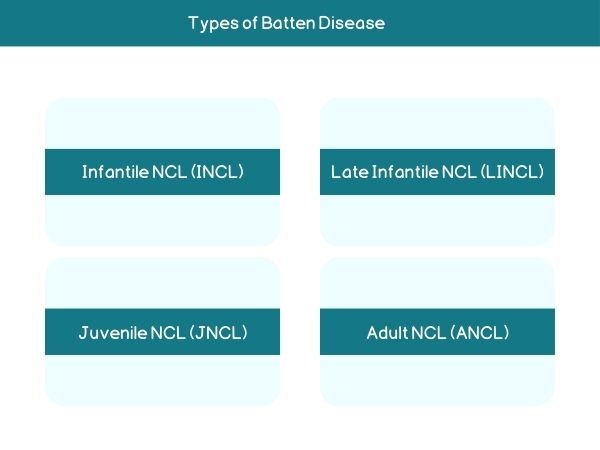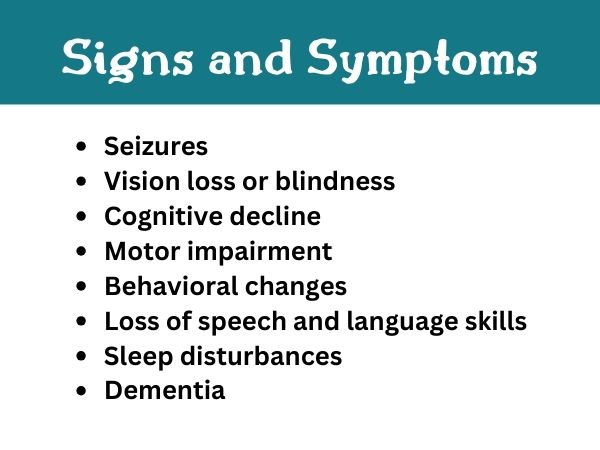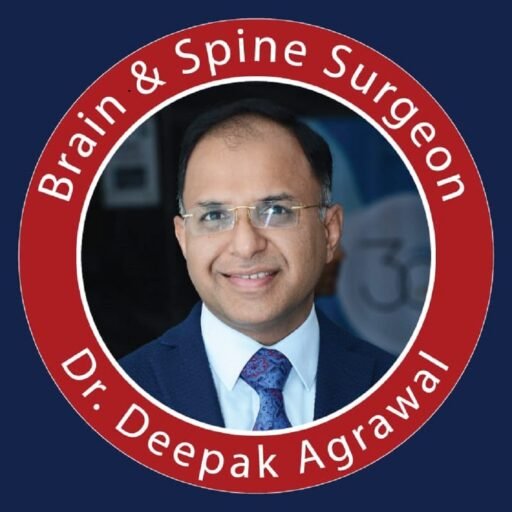Topics
Table of Contents
Batten disease, also known as neuronal ceroid lipofuscinosis (NCL), is a rare and fatal genetic disorder that primarily affects the nervous system. This progressive condition typically begins in childhood and can lead to severe neurological impairment and premature death. With various types and a range of symptoms, Batten disease poses significant challenges for patients and their families. Understanding its nuances, including signs, causes, and treatment options, is essential for those impacted by this devastating condition.
Types of Batten Disease

Batten disease encompasses several types, each distinguished by the age of onset, the progression of symptoms, and the genetic mutation responsible. The common forms include:
- Infantile NCL (INCL): INCL usually appears between 6 months to 2 years of age. Symptoms may include seizures, developmental regression, vision loss, and impaired motor skills.
- Late Infantile NCL (LINCL): LINCL typically manifests between ages 2 and 4. Symptoms often include cognitive decline, seizures, loss of motor skills, and vision impairment.
- Juvenile NCL (JNCL): JNCL is the most common form, usually emerging between ages 5 and 10. Symptoms include progressive vision loss, cognitive decline, seizures, behavioral changes, and movement disorders.
- Adult NCL (ANCL): ANCL is less common and may appear anywhere from late adolescence to mid-adulthood. Symptoms are similar to JNCL but progress more slowly.
Signs and Symptoms

The signs and symptoms of Batten disease vary depending on the type and stage of the condition. However, common manifestations include:
- Seizures
- Vision loss or blindness
- Cognitive decline
- Motor impairment
- Behavioral changes
- Loss of speech and language skills
- Sleep disturbances
- Dementia
Causes of Batten Disease

Batten disease is primarily caused by genetic mutations that affect the function of lysosomes, which are cellular structures responsible for breaking down waste materials. The mutations result in the accumulation of lip pigments in various tissues, particularly in nerve cells within the brain and the retina. The exact mechanisms underlying the disease progression are still being studied, but researchers believe that the buildup of these substances contributes to neuronal dysfunction and cell death.
Prevention
As Batten disease is a genetic disorder, prevention primarily involves genetic counseling and testing for families with a history of the condition. Prenatal testing can help identify carriers of the mutated genes, allowing individuals to make informed decisions about family planning. However, since Batten disease is inherited in an autosomal recessive pattern, where both parents must carry the mutated gene, prevention strategies are limited.
Diagnosis
Diagnosing Batten disease often involves a combination of clinical evaluations, genetic testing, imaging studies, and laboratory tests. A thorough medical history, including family history, can provide important clues. Genetic testing can identify mutations in specific genes associated with Batten disease. Additionally, imaging techniques such as magnetic resonance imaging (MRI) may reveal characteristic changes in the brain.
Treatment for Batten Disease

Currently, there is no cure for Batten disease, and treatment focuses on managing symptoms and improving quality of life. Supportive care measures may include:
- Medications to control seizures and manage behavioral symptoms
- Physical therapy to maintain mobility and prevent contractures
- Occupational therapy to enhance daily living skills
- Speech therapy to address communication difficulties
- Nutritional support to ensure adequate caloric intake and prevent malnutrition
- Palliative care to alleviate pain and discomfort
- Experimental therapies, including enzyme replacement therapy and gene therapy, are being investigated in clinical trials. These treatments aim to address the underlying cause of Batten disease by replacing deficient enzymes or correcting genetic mutations. While promising, further research is needed to determine their safety and effectiveness.
Home Remedies and Supportive Care

In addition to medical interventions, certain home remedies and supportive care strategies can help improve the quality of life for individuals with Batten disease and their families. These may include:
- Creating a safe and accessible home environment to accommodate mobility challenges.
- Establishing a consistent daily routine to promote comfort and stability.
- Providing emotional support and counseling for both the patient and caregivers.
- Connecting with support groups and advocacy organizations for information and resources.
- Exploring complementary therapies such as music therapy, art therapy, and animal-assisted therapy to enhance well-being.
In conclusion, Batten disease is a rare and devastating genetic disorder that affects individuals and families worldwide. Despite significant challenges, ongoing research offers hope for better understanding, treatment, and ultimately, a cure for this debilitating condition. In the meantime, comprehensive care and support remain essential for improving the quality of life for those affected by Batten disease.
